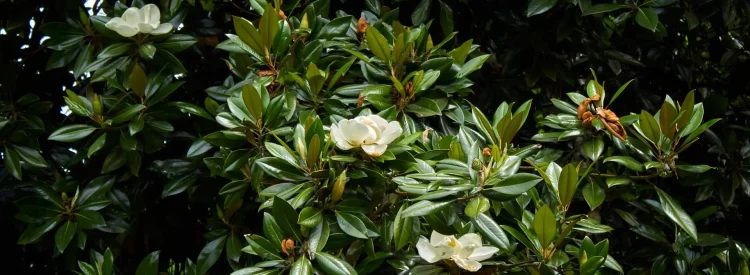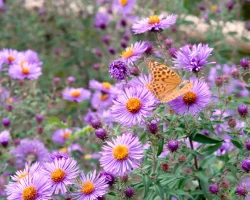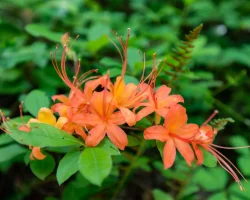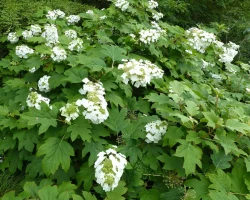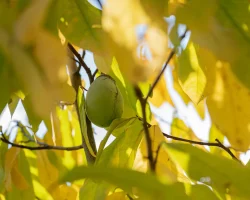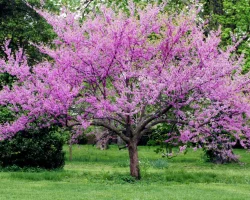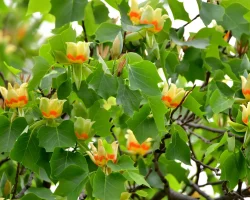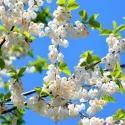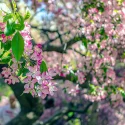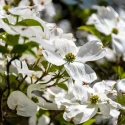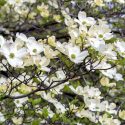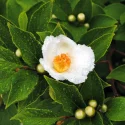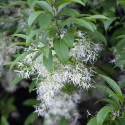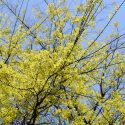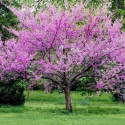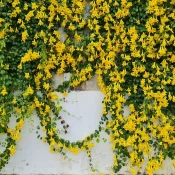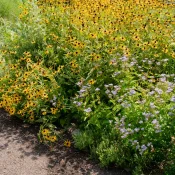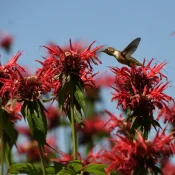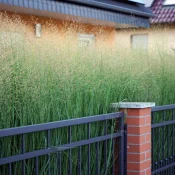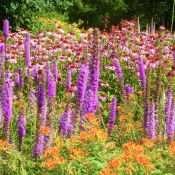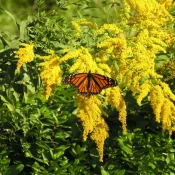Magnolias are show-stopping trees, loved for their breathtaking flowers and lush, often evergreen leaves. With 200+ species found worldwide, these trees come in all shapes and sizes. Here in North America, eight native species take the spotlight—not just for their beauty, but for how effortlessly they fit into your yard. Keep reading to learn why native magnolias are a smart, low-maintenance choice and how to spot these stunning trees in your neighborhood or garden.
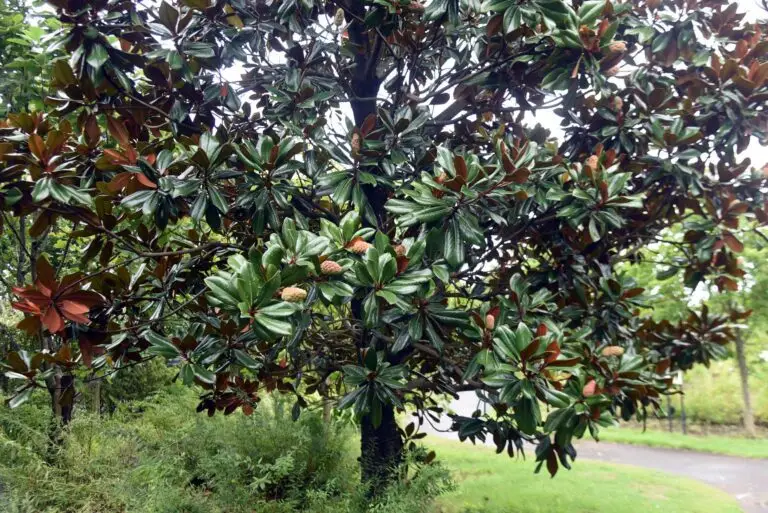
Let’s start with a basic question:
What are the benefits of planting native magnolias?
There are 200+ magnolia species worldwide, eight magnolias are native to North America. (This number doesn’t include cultivars.) Our native magnolias are a beloved part of American storytelling and iconography, mentioned in Gone With the Wind alongside award-winning stories by Zora Neale Hurston and Ibram X. Kendi.
Planting native magnolias offers significant advantages over non-native varieties. Some clear benefits include:
Non-Native Magnolias
- Often need extra watering and fertilizer to stay healthy
- Many struggle with cold weather and may lose branches in freezes
- Typically don’t support local butterflies, birds, or other wildlife
Native Magnolias
- Thrive with natural rainfall once established—low maintenance!
- Many species, like cucumber and sweetbay, are cold-hardy
- Actively support wildlife—sweetbay is even a host plant for Eastern Tiger Swallowtails
Where are the other 200 species of magnolia from?
Most magnolia species are native to Asia, with some also found in Central and South America and the West Indies. Some non-native magnolias that might be living in your landscape include:
- Kobus Magnolia (Magnolia Kobus, native to Japan)
- Jade Magnolia (Magnolia denudata, native to China)
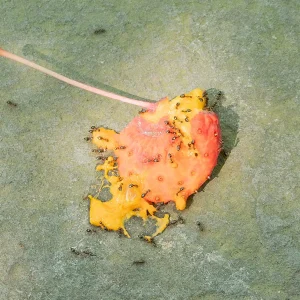
It’s strange why these non-native species have crept into American landscaping when North American magnolias have long been considered the most beautiful magnolias. (And non-native magnolias can be messy!
Non-native magnolias like Kousas drop their berries everywhere, attracting ants.) North American magnolias have been exported for landscaping almost as soon as ships could cross the Atlantic.
This is why…
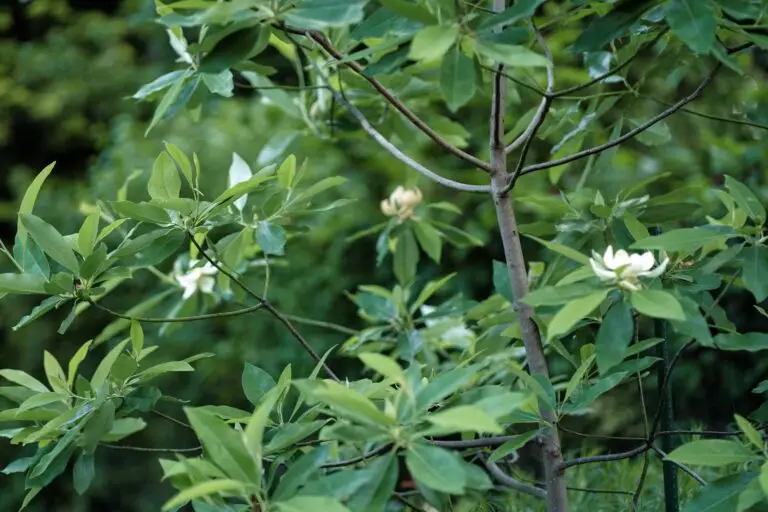
You’ll find North America’s magnolias all over Europe
Since the 16th century, North American magnolias have been cherished in European gardens. Today, you’ll encounter huge, beautiful North American magnolias in many celebrated European locations, including Kew Gardens in London, along streets in Rome and Florence, and parks in Lombardy, Italy.
Let’s explore these beautiful native magnolias and discover how they can enhance your garden. We’ve separated the native magnolias into two groups: Evergreen/Semi-Evergreen and Deciduous, which shed their leaves in winter.
Native Evergreen / Semi-Evergreen Magnolias
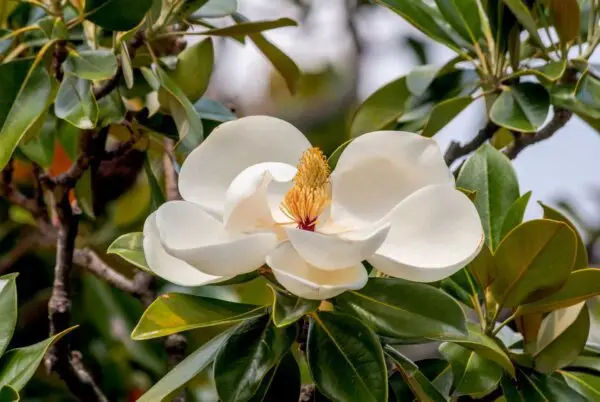
Southern Magnolia
Magnolia grandiflora
When you close your eyes and think of a magnolia, you are probably imagining (and smelling!) a southern. The dark, glossy evergreen leaves are paired with huge ivory blooms, which smell amazing. This iconic tree hails from North America and is prized across the globe. Learn more in our Southern Magnolia plant profile.
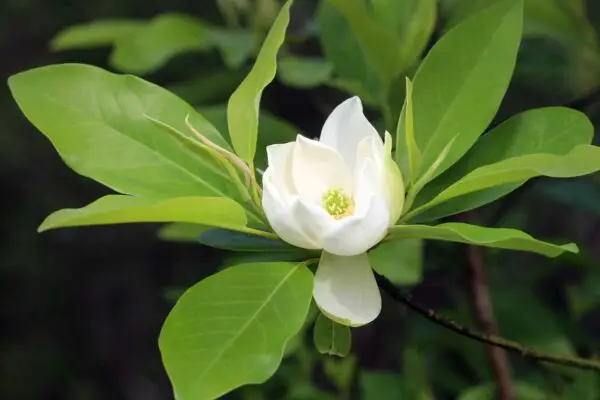
Sweetbay Magnolia
Magnolia Virginiana
Sweetbays are native from Massachusetts down to Florida. Why this tree is often overlooked in landscaping is a mystery! Their semi-evergreen leaves often have a silvery underside, along with a lighter, more airy canopy. It’s a perfect magnolia to plant if you live on the East Coast. Learn more in our Sweetbay Magnolia plant profile.
Native Deciduous Magnolias
‘Deciduous’ means these trees loose their leaves in the cooler months
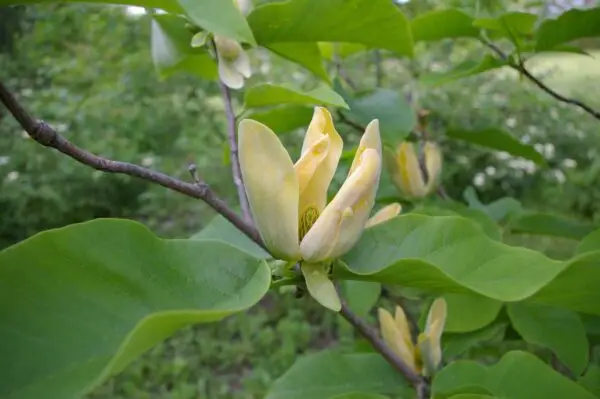
Cucumber Magnolia
Magnolia Acuminata
Cucumber magnolias are named for the shape of their cucumber-esque fruits. It’s rare to find a tree that makes yellow flowers, so these stand out. Cucumber Magnolias are the only magnolias native to Canada. Learn more in our Cucumber Magnolia plant profile.
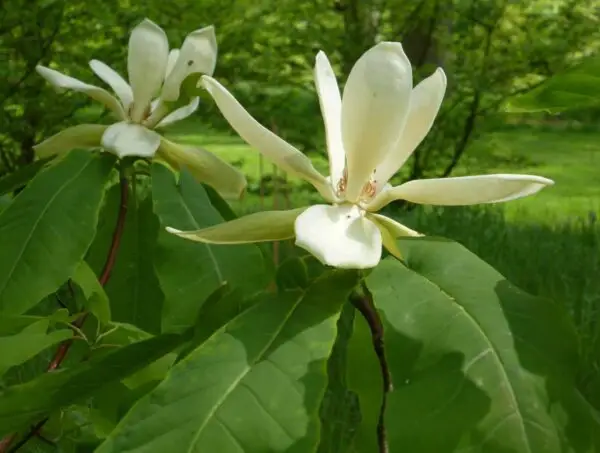
Mountain Magnolia
Magnolia Fraseri
This is a petite Magnolia! Mountain magnolias (also called Fraser magnolias) stay small compared to their cousins, topping out around 40 feet. It is found in the Appalachian mountains region and prefers moist soils, especially along streams.
Pyramid Magnolia
Magnolia fraseri var. pyramidata
The pyramid magnolia shares a lot of growing similarities with the mountain magnolia (it also likes moist areas) but its native range is a little more coastal compared to the mountain magnolia.
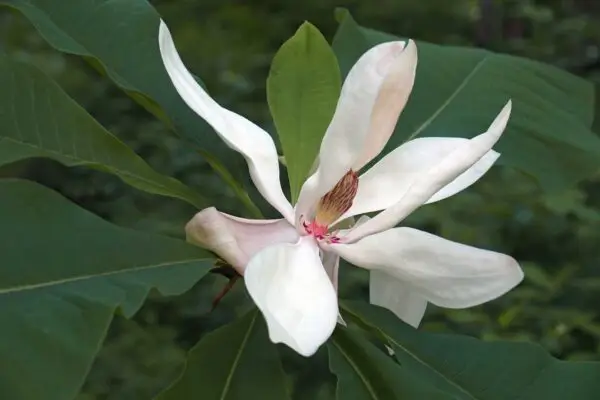
Bigleaf Magnolia
Magnolia Macrophylla
A bigleaf’s flowers are huge: sometimes up to two feet across. Its leaves are also enormous: up to THIRTY INCHES long. Because its leaves are so large, this tree takes up space, making it challenging for landscaping. But if you have the space, plant a few for a stunning landscape.
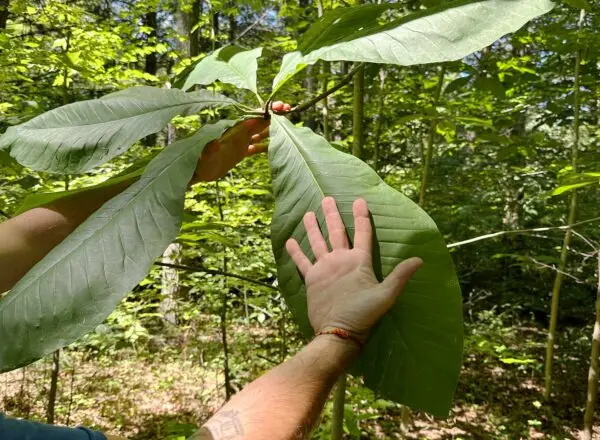
Umbrella Magnolia
Magnolia tripetala
Umbrella magnolias also have HUGE leaves—up to 1-2 foot apiece. They are native from Massachusetts down to Arkansas and max out around 30-50 feet. The name ‘umbrella’ is inspired by the way their huge leaves cluster around the ends of their branches. (The picture here shows this, alongside their enormous leaves!)
While their leaves are large, their flowers are small—only 4 inches across. But the grandness of the leaves is what umbrella magnolias are known for. These trees are harder to find in nurseries—use our native plant nursery directory to make finding one easier.
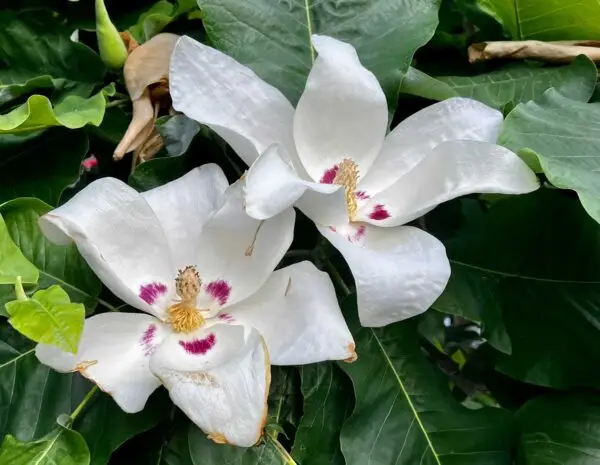
Ashe Magnolia
Magnolia macrophylla subsp. ashei
This is a rare, endangered tree native to the Florida panhandle. While its native range is tiny, ashe magnolia is successfully used in landscaping as far north as Pennsylvania. The ‘national champion’ ashe magnolia (or the largest of this species in existence) is located at the Henry Botanic Garden in Gladwyne, PA.
Ashe magnolias are smaller trees, reaching around 30 feet. Their flowers have lovely pink details. Although they lose their leaves in the winter, their branches are known for their sculptural shapes, leaving lots to admire in the cooler months.
Congratulations, you’ve discovered the native magnolias of North America! Known for their timeless beauty, these trees are ready to thrive in your yard.
Now that we’ve said the word ‘magnolia’ roughly 25 times, you may be wondering…
Where did the name Magnolia come from?
Magnolia sounds beautiful, and a little French, right? Here’s why:
These remarkable trees’ common and Latin names come from the French botanist Pierre Magnol, who worked in the 17th century. Magnol never visited North America but his students did, and they named this tree after their teacher. Sadly, many long-dead Europeans offer the Latin naming inspiration for some of North America’s most beautiful native plants—Rudbeckia, AKA black-eyed Susans, and Monarda, AKA bee balm, are other examples.
FAQs
What native magnolias thrive in cold weather?
Sweetbay Magnolia and Cucumber Magnolia are native to northern areas and can thrive in wintery weather.
Cucumber Magnolias are the only magnolia native to Canada.
What pairs well with native magnolias?
If you’re interested in other flowering native trees and shrubs, there are lots to pick from. Favorite flowering trees, such as redbud, tulip poplar, and pawpaw, are gorgeous, alongside flowering shrubs like oakleaf hydrangea and native azaleas, as well as some fall-blooming natives like asters.

Pairs well with
Native magnolias are more than just beautiful—they’re a meaningful way to connect your yard to the natural world while enjoying their year-round charm. Whether you choose the iconic southern magnolia or the elegant sweetbay magnolia, these trees are low-maintenance, resilient, and perfect for any home garden. Ready to bring these stunning trees to your yard? Check out our Native Plant Profiles or visit our Native Plant Nursery List to find your perfect magnolia today. Looking for a statement tree? Our guide to the Best Native Trees for Front Yards is also worth a read. Happy planting!
Sources
- Nelson, Gil. Best Native Plants for Southern Gardens: A Handbook for Gardeners, Homeowners, and Professionals, (2010), 130-142.
- Nelson, Gil. “America’s Magnolias,” The American Gardener. (September/October 2008), 38-43.
- Arbor Day, Magnolia: National Tree Candidate.
- Missouri Botanic Garden, Cucumber Magnolia.
- North Carolina Gardener Extension, Bigleaf Magnolia.
- North Carolina Gardener Extension, Magnolia cylindrica.
- North Carolina Gardener Extension, Magnolia denudata.
- Missouri Botanic Garden, Bigleaf Magnolia.
- Magnolia Society, Ashe Magnolia (PDF).
- Holden Forests, Sweetbay Magnolia & Eastern Tiger Swallowtail.
What if your feed was actually good for your mental health?
Give your algorithm a breath of fresh air and follow us.
